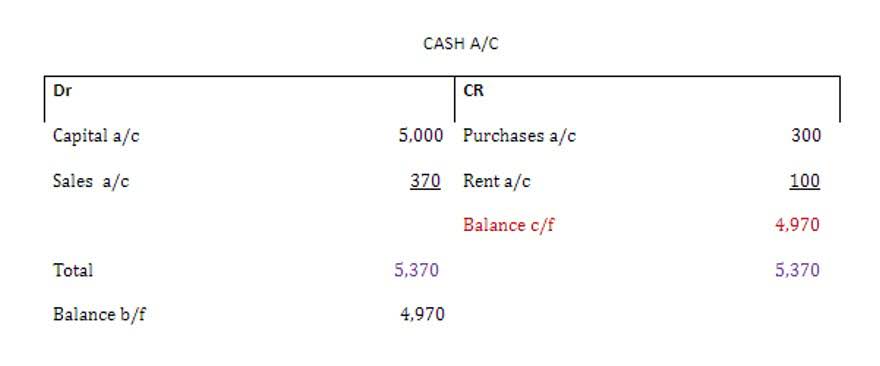How to Make a Profit and Loss Statement

Your owners’ equity is the sum of the owners’ initial investment when you launched your firm, plus any retained earnings they have invested since then. Think of revenue as all the money flowing into your firm before any deductions or expenses are considered. Simply speaking, it’s the gross income at the top of your financial statements. The process of selecting a lawyer takes clients extensive time for research, which demands that law firms develop long-term relationships with potential clients and nurture leads. Some software tools offer handy profit and loss statement templates and can also provide additional resources on operational planning to guide you through preparing more in-depth P&L statements.
What period does a P&L statement cover?

Of course, profitability depends on the activities that contribute to your business. But there are financial decisions you can make that will help you not only stay afloat but thrive. When creating your own, you’ll want to adjust the categories to meet the needs of your business and delete those that don’t profit in law statement apply. The format is simple, so you should be able to reproduce it using a two-column chart.
Understanding Your Law Firm’s Financial Levers

Organized marketing and business development strategies allow additional revenue growth. A P&L statement reports on an organization’s financial performance, which can be compared to competitors in the same industry. Law firm profitability depends not just on meeting its base revenue goals, but also on fostering client satisfaction and efficiency to maintain long-term success in a dynamic legal landscape.
Tools that may help you: adapting to new technologies
For example, only using parent categories such as payroll won’t allow you to see enough data to make useful decisions about staff costs. The pros of using the multi-step methodAn itemized breakdown of costs and revenue allows a company to conduct a deeper analysis of its financial performance. This can lead to better decisions from the Office of the CFO in all things related to budgets, business strategy, and overall financial performance.

Customizable P&L templates
For example, payroll automation can be made simple by using legal practice management software, which easily integrates with payroll applications. Small businesses often need loans, both when they’re starting out and when they encounter opportunities or challenges down the line, such as if they’re looking to expand. By preparing a P&L statement, a leader at What is bookkeeping a law firm can demonstrate their expectations and strength in terms of profitability and total expenses. A P&L statement is a document that shows a law firm’s revenue, expenses, gross profit, net profit, and other financial information during a given period of time. This guide provides ten tested approaches and examples of using TMetric to make a law firm profitable, improve law firm business, and increase law firm efficiency. The cons of using the multi-step methodA multi-step P&L statement is much more time-intensive to produce from an accounting standpoint.
- However, they’ve expressed that the WiFi isn’t strong enough to support these calls.
- When you maintain a profit and loss statement, you can clearly see how significantly — or insignificantly — your cash flow has changed in a given period of time.
- It delivers a clear picture of time utilization and makes it easy for legal business owners to see what non-core functions can be optimized or outsourced.
- While at first financial statements read like a foreign language, you can master them in short order.
Why Are Profit and Loss (P&L) Statements Important?
Law firm succession planning is an integral part of retiring for those who own and operate law firms. To ensure your clients are supported and your firm is left with trusted and capable professionals, read our law firm succession planning guide. Balance sheets offer a bigger-picture view of your finances at any given point in time, such as monthly or quarterly. They will allow you to review what has happened at your law firm financially during that specific period. While they’re not the tools that will provide you with a bigger-picture overview of where your organization stands, they can help you get from point A to point B. This, in conjunction with tax returns and other financial statements, will help present a clear picture of your business needs and current situation.
What’s the difference between a profit and loss statement and a balance sheet?
Detailed profit and loss statements will provide you with several income-related figures, each of which will be calculated and placed on its own line. Comparing one company’s P&L statement with another in the same industry that is similar in size can further help investors evaluate the financial well-being of a company. For example, doing so might reveal that one company is more efficient at managing expenses and has better growth potential than the other. A low realisation rate might point to issues like unbilled hours or clients disputing fees. By keeping this metric in focus, firms can tweak their processes to capture more of the revenue they’ve earned.
- Of course, law firms should always aim to have strong profit margins, with a profit over a loss.
- A profit and loss statement, often called a P&L statement, is a financial report that shows how much money a business made and spent over a specific period.
- Practice indicates that firms can increase collections simply by improving billing practices.
- It starts with total sales or revenue, which is the money coming in from selling products or services.
- In this article, it’s a key tool for demystifying your firm’s financial standing.
Overtime Tracking
She holds a Bachelor Grocery Store Accounting of Science in Finance degree from Bridgewater State University and helps develop content strategies. Cash on hand measures the liquid funds available to cover immediate expenses, from payroll to rent. It’s a safety net that ensures a firm can weather unexpected slowdowns or emergencies without scrambling for resources.